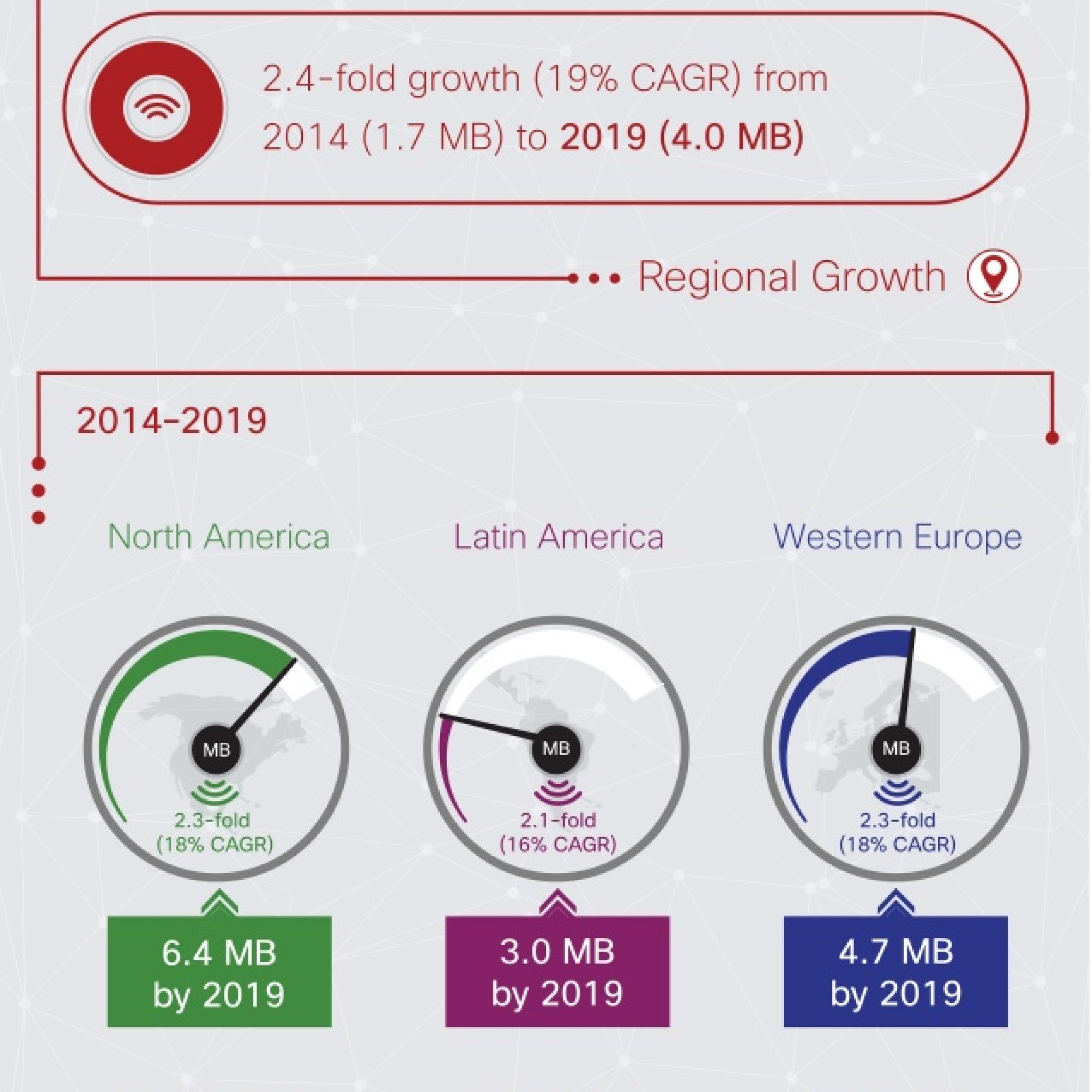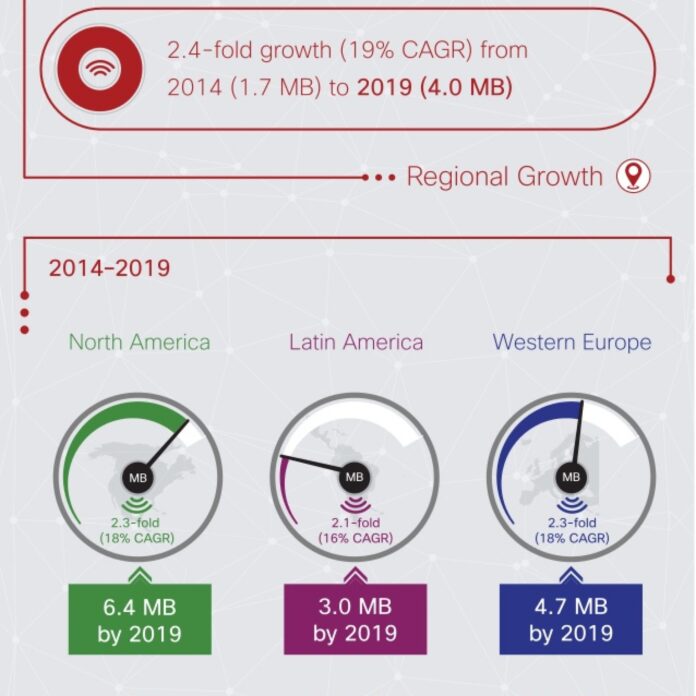Global mobile networks will see a tenfold increase in data over the next five years, according to Cisco’s mobile visual networking index for 2015. Traffic is expected to reach an annual rate of 292 exabytes by 2019, compared to 30 exabytes in 2014. For some perspective on how much data that 292-exabyte figure reflects, Cisco said it would compare to 65 trillion images (23 per person on the planet, per day, for a year), or 6 trillion YouTube-type video clips.
Due to continued growth in subscribers as well as increases in the numbers of devices per subscriber, the number of mobile users globally is predicted to reach 5.2 billion by 2019 – more than 69% of the world’s population will be a mobile user. In terms of devices, Cisco estimates that in five years, there will be about 11.5 billion mobile devices and/or connections, of which 8.3 billion will be personal devices and 3.2 billion will be machine-to-machine connections. Comparatively, Cisco accounted for 7.4 billion total connections last year.
Arielle Sumits, senior analyst on Cisco’s VNI team, said that compared to the wireline ecosystem that Cisco also examines each year, mobile networks and their traffic are “much more dynamic, and changing rapidly.”
Among the findings of the mobile VNI for 2015:
- Cisco said that 88% of global mobile traffic was so-called “smart” traffic, which it categorized as “advanced computing/multimedia capabilities” and at least 3G-level connectivity. Smart traffic is expected to reach 97% of overall traffic by 2019.
- The data gave some insight into how the overall wireless ecosystem is shifting. For instance, even as 4G becomes more widely deployed, 2G is still expected to be the dominant cellular technology on a global basis until 2017, when 3G is predicted to supplant it. By 2019, Cisco said, 3G networks will carry 44% of mobile devices and connections. While 4G will account for 26% of connections at that point, it will generate 68% of traffic.
- Wi-Fi continues to play a major role in offload. Cisco said that 46% of mobile data traffic was offloaded from dual-mode mobile devices – excluding laptops – that support both cellular and Wi-Fi coverage. By 2019, it said, 54% of mobile data will be offloaded. If Wi-Fi offload wasn’t available, mobile networks would be seeing even faster growth: a compound annual growth rate of 65% instead of 57%, Cisco added.
- The average mobile user is expected to watch much more video, up from about three hours per month in 2014 to 30 hours by 2019, which Cisco predicts will drive 72% of mobile traffic, up from 55% in 2014.
Cisco also spotlighted a couple more interesting trends: It expects voice-over-Wi-Fi to play a significant role in the next five years, now that carrier-grade VoWi-Fi is being introduced. The company expects VoWi-Fi traffic to surpass voice over LTE traffic – also in its early days – by 2017 and estimates that by 2019, VoWi-Fi will account for 53% of all mobile IP voice traffic.
“We do think that voice-over-Wi-Fi could become very significant in the context of offload,” Sumits said. She added that the scenario was a bit of a wild card, but said that the barriers to deploying VoWi-Fi are lower than VoLTE and the number of devices that could utilize the technology are also higher.
In addition, Cisco explored the possibility that unlimited pricing plans might make a comeback, based on data from Tier 1 and Tier 2 carriers. Usha Andra, senior analyst with Cisco’s VNI team, said analysis showed that while the top 1% of mobile users generated 52% of data traffic in 2010, by 2014 they only accounted for 18% of traffic – leaving open the possibility that carriers may be able to ease data caps if they are so inclined.
For additional details from the Cisco mobile VNI 2015 report, check out the following infographic and read more commentary from Cisco on the “Internet of Things” trend and more:


